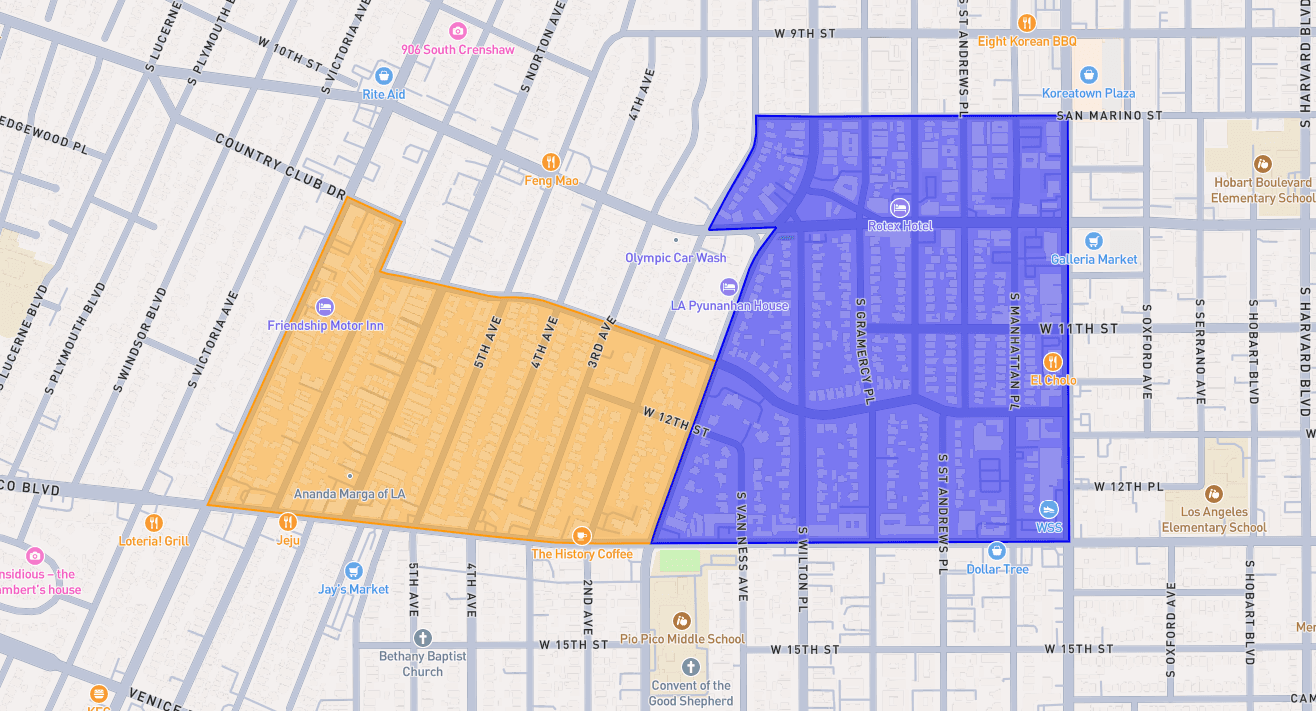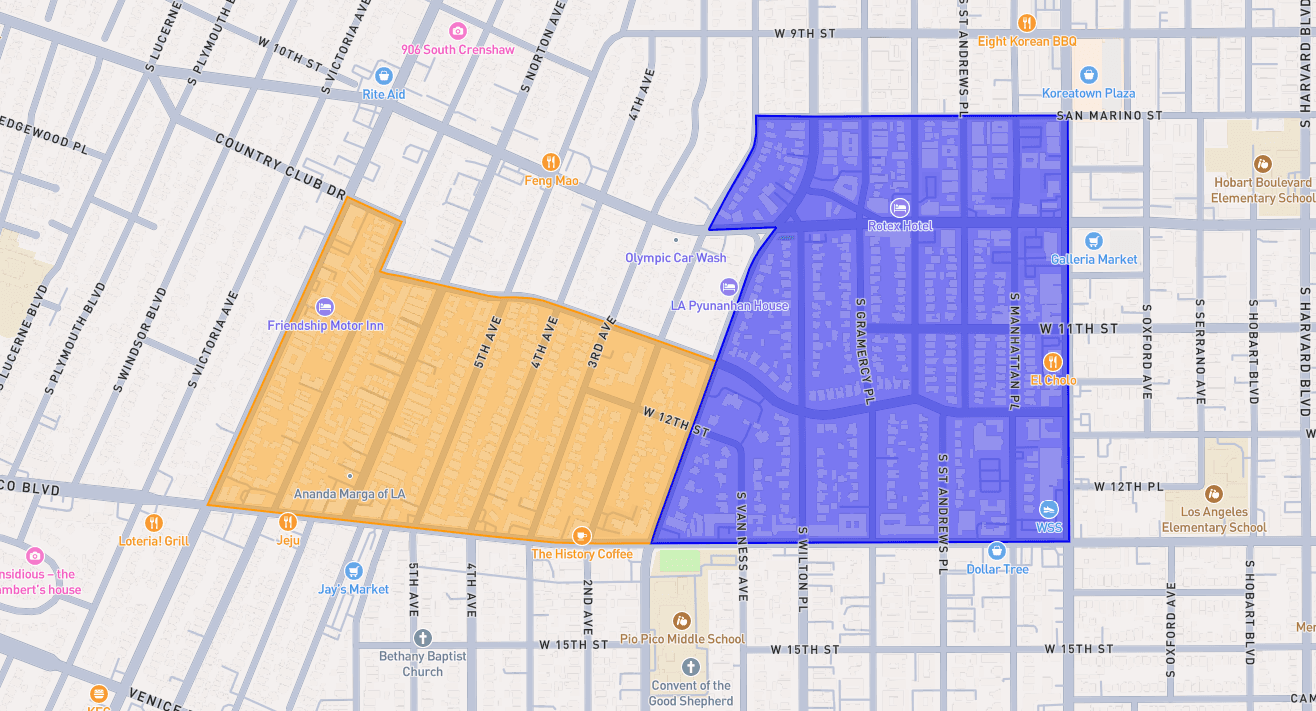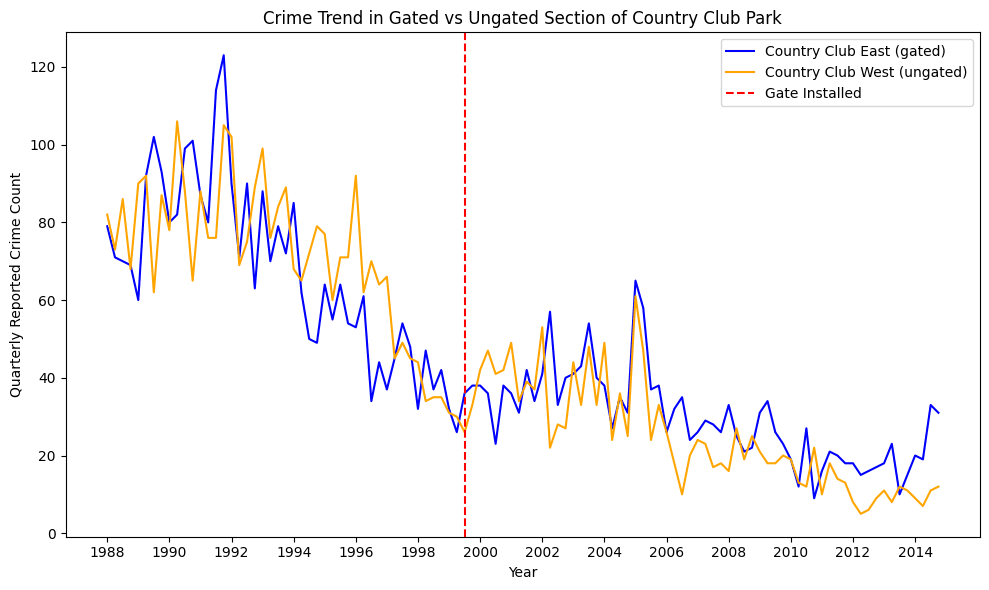
Does Gated Access Actually Prevent Crime? A Case Study
Published on Fri Aug 30 2024
In 1999, Los Angeles' Country Club Park Neighborhood Association made a controversial decision. Citing rising crime rates, they erected gates to control access to their streets—a move justified as a temporary measure to combat criminal activity. Two decades later, those "temporary" gates remain firmly in place, with defenders arguing that any alteration would compromise community safety.
But what evidence exists to support the claim that these gates are actually preventing crime?
The neighborhood's layout—with gated sections in the east and open streets in the west—presents an unexpected opportunity to move beyond speculation and examine hard data on the gates' impact on local crime rates. The findings from this inadvertent experiment were are surprisingly different from what defenders of the gates may predict.
Examining Crime in Country Club Park
To understand the impact of gated access in Country Club Park, we analyzed LAPD crime data provided by Penn criminologist Greg Ridgeway. The data covers a period from 1988 to 2014 and is broken down by reporting districts, allowing us to compare crime rates in the gated areas of Country Club Park with those in the un-gated areas of the neighborhood west of Arlington.
Before the gates were installed, crime rates in the soon-to-be-gated and un-gated parts of Country Club Park were relatively similar. Both areas experienced the typical fluctuations in crime that are seen across many urban neighborhoods. The expectation was that the installation of gates would lead to a significant decrease in crime in the gated areas compared to their un-gated counterparts.

The blue area had gates installed at Pico Blvd in 1999, while the orange area of Country Club Park, west of Arlington, did not.
Gated vs. Un-Gated Areas (1988-2014)
Before the Gates
In the years leading up to the installation of gates, crime rates in the future gated areas were in line with those in the un-gated parts of Country Club Park. There was no significant difference in the number of burglaries or other crimes reported, suggesting that the neighborhoods were comparable in terms of safety.
After the Gates
Contrary to expectations, the data shows that the gated areas of Country Club Park actually experienced a rise in crime¹ after the gates were installed. Specifically, burglaries—a crime that gates are supposed to prevent—saw a notable increase. Meanwhile, the un-gated areas west of Arlington did not experience a similar spike in crime during the same period. In fact, some un-gated areas even saw a slight decrease in certain types of crime.

Crime trends in two sections of Country Club Park (1988-2014), showing similar fluctuations before and after gate installation. Post-2012, burglary rates slightly increase in the gated section.
Why Did Crime Increase?
So why did the installation of gates fail to reduce crime in Country Club Park? Several factors may explain this counterintuitive outcome:
False Sense of Security: Residents in gated areas may have become complacent, believing that the gates alone would keep them safe. This false sense of security could have led to less vigilance and fewer proactive measures to protect their homes, such as installing alarms or maintaining neighborhood watch programs.
Targeting by Criminals: Gated areas can sometimes become targets for criminals who perceive them as wealthier or less likely to be well-defended beyond the gates. This perception may have drawn more determined criminals to the area, leading to an increase in crime.
Changes in Traffic Patterns: Gates can alter the flow of traffic in a neighborhood, potentially leading to less foot traffic and fewer "eyes on the street," which are natural deterrents to crime. With fewer people around, criminals may have felt more emboldened to commit crimes in the gated areas.
Rethinking Security of Gated Neighborhoods
The findings challenge the conventional wisdom that gated neighborhoods are inherently safer. While gates can control access, they do not guarantee security and may even create vulnerabilities if residents rely too heavily on them without considering other aspects of crime prevention.
For community associations and residents considering gated access as a security measure, this case study suggests the need for a more comprehensive and data-driven approach to public safety and an end to ineffective interventions like street gates that limit mobility while doing little to stop crime.
[1] Verified via difference-in-difference analysis of LAPD quarterly crime totals. Source data and rigorous regression analysis available on request. Contact [email protected].